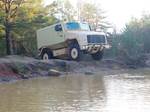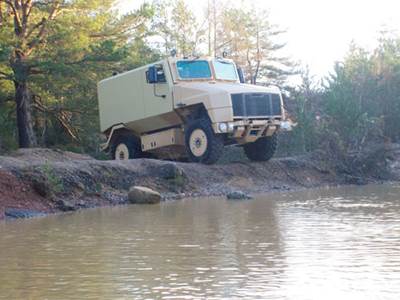Facing the military drawdown
HPC editor-in-chief Jeff Sloan comments on the impact that military drawdowns in the Middle East might have on the U.S. composites industry.
One of my job responsibilities is to gather composites industry news each week for publication in our CompositesWorld Weekly e-newsletter. I use keyword searches on the Internet to stay on top of news and announcements and have a stable of about 30 keywords I use, including company names, such as Lockheed Martin, Northrop Grumman, Boeing, Airbus, Sikorsky, etc.
One thing I’ve learned, poring over search results, is that the wars in Iraq and Afghanistan have been very lucrative for military contractors. I see, almost every day, announcements of federal defense contracts, and a resulting increase in demand for composite parts and structures — unmanned aerial vehicles, aircraft and helicopter components, naval patrol boats, vehicle and personal armor, soldier housing and more. (A good example of the armor R&D can be found in this issue, where contributor Mike LeGault explores the latest antiballistic composites technologies for battlefield application — see "Editor's Picks," at right.)
Setting aside for the moment the arguments for and against our presence in these countries, the fact that we have been in Afghanistan since 2001 and Iraq since 2003 has created a vigorous and well-funded military economy that employs thousands of people and consumes millions of pounds of composite materials each year. It has spurred creativity and innovation in application of composite products that we might otherwise not have seen. Use of military hardware in combat has exposed many limitations, forcing the military community to think more seriously about composites as a means of lightweighting and corrosion-prevention in its warfighting structures and for protection of troops in harm’s way.
All of this has been wonderful for the composites community, but like it or not, such gravy trains don’t run forever. As I write this editorial in mid-August, the U.S. has announced the departure from Iraq of its last combat brigade. Only 50,000 troops remain to help keep the peace, train Iraqi solders and continue rebuilding the country. In Afghanistan, a U.S. troop drawdown could begin as soon as next summer. As these conflicts end their “hot” phases, demand for some composite parts and structures will wane as well. No surprise, then, that U.S. Department of Defense Secretary Robert Gates has proposed military spending cuts totalling $100 billion (USD) over the next five years. And that’s on top of the Pentagon’s decision in 2009 to cut the F-22 fighter jet program. Will other high-profile projects also get the ax? The bottom line is that money will not flow to defense projects like it once did, and there will be consequences.
It would be helpful if there were other emerging end markets to pick up the lost demand. Wind energy, for one, shows promise to consume large quantities of composite materials for many years, but it’s been hobbled severely by the recession and accompanying credit crunch. The auto industry, also laid low by the recession, is reorganizing itself to emphasize electric drivetrain technology that may attract several new uses of composites, but this looks to be a slow-evolving transition out of a very deep ditch.
We’ve become accustomed over the past nine years to tapping a full military funding pipeline for a variety of products and projects and must now wean ourselves of this dependence as the war-funding flow slows to a trickle. We are faced with a classic challenge-vs.-opportunity conundrum. It seems like an opportunity to me, and now is the time to think creatively about how composites can be further adapted to replace metals and other legacy materials throughout the manufacturing world.
Related Content
Up, not out: The next chapter of CompositesWorld
I have been editor-in-chief of CompositesWorld for 17 years, which translates into a lot of editorials. This will be my last as I become publisher of CW. We welcome Scott Francis back to the brand to take my place.
Read MoreYour must-have composites industry guide for 2025
Welcome to CW’s annual SourceBook, your guide to suppliers of machinery, materials, software and other services for the composites industry.
Read MoreA return to JEC World
CW editor-in-chief Scott Francis reflects on the ways in which the composites industry has changed and also stayed the same based on observations from this year’s JEC World.
Read MoreThe real value of CompositesWorld
Will CW editor-in-chief Jeff Sloan soon be replaced by ChatGPT? Probably not before he retires, but it’s fun to consider the possibility.
Read MoreRead Next
Structural armor or armored structures?
Either way, antiballistics engineers seek structural integrity and ballistic deterrence from a single design.
Read MoreAll-recycled, needle-punched nonwoven CFRP slashes carbon footprint of Formula 2 seat
Dallara and Tenowo collaborate to produce a race-ready Formula 2 seat using recycled carbon fiber, reducing CO2 emissions by 97.5% compared to virgin materials.
Read MoreVIDEO: High-volume processing for fiberglass components
Cannon Ergos, a company specializing in high-ton presses and equipment for composites fabrication and plastics processing, displayed automotive and industrial components at CAMX 2024.
Read More





















